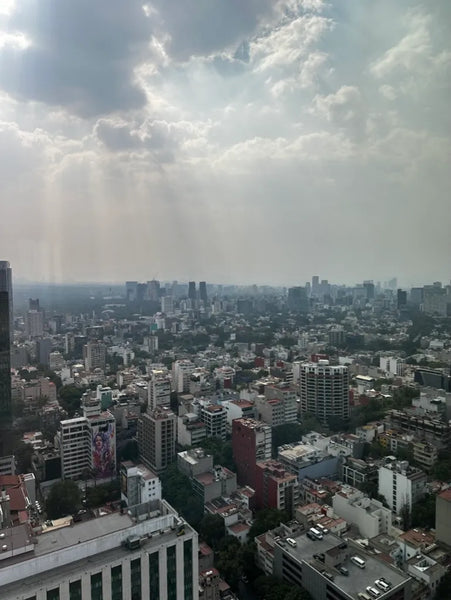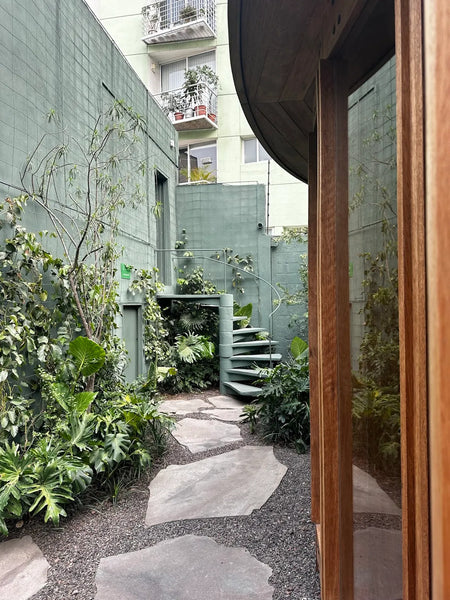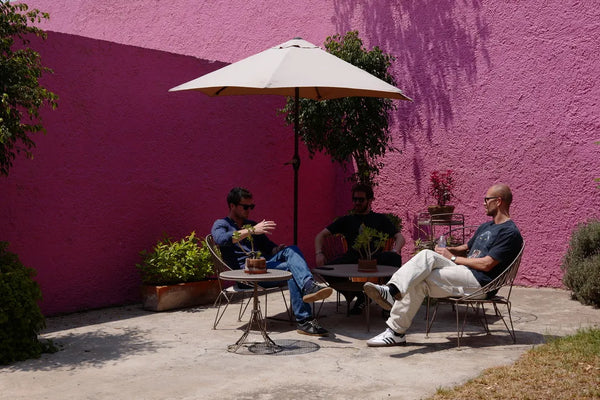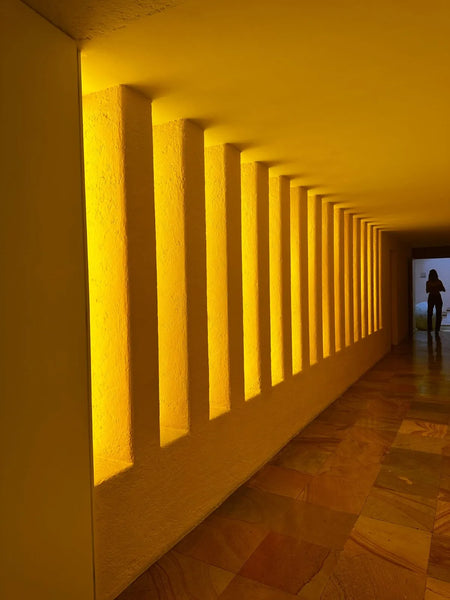Thank you for reading these Marly Huddles — each time I visit a new place, I see it through a new lens.
This incredible journey that Marly has taken me on allows me to write and share longer-form pieces all of you who have been following along.
This entry is about a recent trip to Mexico City and the incredible impacts of plants, public green space(s) and ancient traditions that have empowered its people to create practices that continue to evolve and shape more sustainable ways of life.
To make sure you receive my notes and company updates before anyone else, please subscribe to our Grower Club newsletter below:
Subscribe to Marly's Grower Club
As I flew into the Mexican capital last week, I was hit immediately with the altitude. My previous visit in 2021 hadn't prepared me for the thin air at 7,349 feet above sea level.
The shortness of breath especially, upon arrival was a reminder of Mexico City's incredible elevation. But as the four other close friends I was traveling with delved deeper into the city's vibrant streets, I couldn't help but be reminded of the abundance of greenery that permeated its urban landscape.

Little did I know that this lush vegetation would play a crucial role in easing my initial discomfort.
On a call with my team during the week, I learned that chlorophyll, the pigment responsible for the green color of plants, works wonders by increasing red blood cell count, which in turn helps the body in absorbing more oxygen.
This natural mechanism serves as a boon for those dealing with altitude sickness, a common ailment exacerbated by the thin air at high elevations.

Throughout our explorations of Mexico City, from the bustling markets to the serene parks, I found solace in all of the plant-filled surroundings.
The presence of green spaces not only adds to the city's aesthetic appeal but also serves as a lifeline for residents and visitors, offering respite from the challenges posed by altitude.
It's a testament to the relationship between humans and plants, where nature's healing properties provide comfort and relief in unexpected ways.
On a much smaller scale, with Marly we are enabling people to bring nature into the home and practice Shinrin-Yoku.

From the towering trees that line the streets to the lush gardens nestled within its urban fabric, Mexico City stands as a testament to the power of nature to nurture.
Being there on the eve of Earth Month, the city's commitment to sustainability and environmental awareness was particularly poignant.
CDMX, as it's been known since 2013, is like the best parts of your favorite cities.
The French architecture and design, the skyline that stretches all the way to the mountains on all sides, and an insane food culture made it an ideal candidate for one of my buddy’s 30th birthdays.
There were 5 of us on this trip and while I’d been to the city before, this trip took us to places that made for an entirely different experience.
Between our visits to (2) homes designed by the country’s most beloved architect, Luis Barragan, to visiting “Mexico’s Venice,” the World Heritage site Xochimilco and its “floating gardens.”
The depth of the city’s heritage combined with the energy it creates makes for an experience that continues to resonate with me. As we walked through each district we visited, I kept asking myself, “What makes a city great?”

Last year, Jenna Schuer of The New York Times identified 6 Cities on 5 Continents That Are Reimagining Urban Life.
Almost without exception, these cities are actively enhancing the quality of life with initiatives such as public green-spaces, vegetable gardens, native foliage, and greener urban development.
One renowned urban planner, Alex Garvein emphasizes the pivotal role of public space in making cities great, highlighting streets, squares, and parks as essential components.
During my time in Mexico City, my friends and I consistently observed instances where this remarkable city prioritized public greenspaces, thereby directly preserving its rich history.
From vibrant parks to meticulously maintained squares, Mexico City's commitment to public greenery not only enhances its urban landscape but also serves as a testament to its cultural heritage.

Mexico’s architectural poster-child, Luis Barragan once remarked that, 'Architecture is an art when one consciously or unconsciously creates aesthetic emotion in the atmosphere and when this environment precedes well-being.'
The Pritzker Prize-winning Mexican architect and civil engineer pioneered a practice known as emotional architecture.
This approach aimed to create spaces that evoke serenity, meditation, joy, and quietude.
Themes that are similar to those that inspired France’s King Louis XVI and his time at Chateau Marly, the place we most often draw inspiration from at Marly Garden.

During our time in CDMX, we had the privilege of visiting three of Barragan's works scattered throughout the city: Casa Gilardi, Torres de Satélite, and Cuadra San Cristóbal. Both Casa Gilardi and Cuadra San Cristóbal were private residences commissioned by clients seeking Barragan's unique practice.
Torres de Satélite, on the other hand, stands as a powerful symbol of Mexico's prosperous future, conceived during a period of successful and stable development amidst the chaos of the Second World War.
Many Mexicans fondly refer to this era as the 'Mexican Miracle.'

Barragan's architectural legacy underscores the transformative power of design and architecture. Through his innovative approach, he not only reshaped the physical landscape of Mexico City but also imbued it with symbols of hope and prosperity in this incredible urban environment.
The Xochimilco Gardens are on the city’s south side. As we pulled up to the entrance, we were greeted with the aromas of fresh quesadillas being rolled, chicken being sizzled and cheladas being poured.
The 400-acre nature reserve is made up mostly of patches of farmland that appear to float in the water. Through this practice of growing plants, the Aztec civilizations that once occupied this region were creating fertile land and turning what was once a lake around the area, into usable farmland.
Since visiting this incredible canal system, I’ve learned that it was the pandemic food shortages that gave a renewed interest in these ancient agricultural practices.
What happened as a result of this was that farmers and “chinampas” were empowered by their local communities to produce sustainable, year-round produce at affordable prices and a low cost to the environment.
Last week, we discussed different plants and produce you can grow at home in your Marly.

In reflecting on my time in Mexico City, I'm struck by the interconnectedness of themes that emerged throughout our time there.
From the prioritization of green space in urban areas to the profound ability of architecture and design to evoke emotion, and the remarkable legacy of the ancient Aztecs in sustainable agriculture, each aspect we encountered speaks to the resilience and ingenuity of the emphasis put on physical environments.
Witnessing the revitalization of ancient agricultural practices in response to contemporary challenges highlights the enduring wisdom embedded in our collective heritage.
The empowerment of local communities to produce sustainable, affordable produce speaks volumes about the potential for positive change when communities come together.
CDMX reminded me of the privilege it is to experience and analyze the lives of diverse peoples and cultures.
It's a reminder of the richness and complexity of our world, and the endless opportunities for learning and growth that come with it.
Mexico City has offered me a glimpse into the past, present, and future of urban life, leaving me with a profound appreciation for the power of innovation, tradition, and community.


